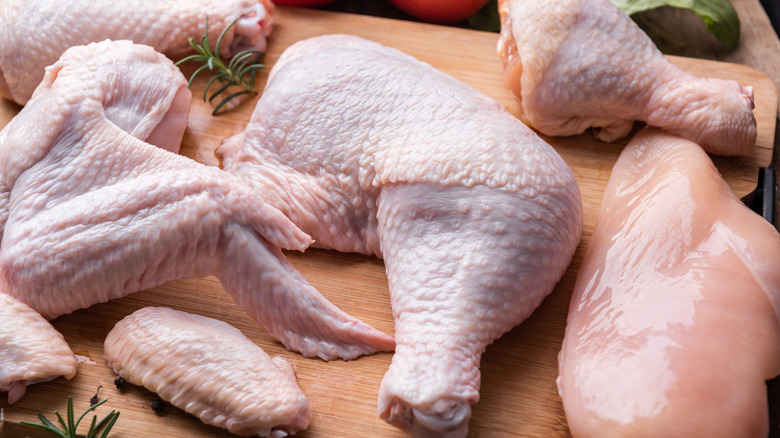The Reason You Should Avoid Buying Pre-Cut Meat At The Grocery Store
You know the old saying: "Good, fast, cheap. You can have any two." That's certainly true at the grocery store, where we pay more for good, fast items we like and which add convenience and speed to our meal preparations yet are not at all cheap. Among the greatest such offenders, and one you should avoid buying from now on, is pre-cut meat.
What's the big deal? After all, buying your stew or fajita meat already cut makes those busy, post-work weeknight meals a bit easier to prepare, right? If this sounds like you, you're in the majority. A 2023 survey found that about 75% of shoppers "sometimes or frequently purchase precut, premarinated, or preseasoned meat," per the Minnesota Star Tribune.
Convenience is generally a good thing. You'd think two packages of the same amount of meat would cost the same, whether it's whole or in pieces. However, that's not actually the case. Pre-cut meat is one grocery item that is commonly, and steeply, marked up. What you're paying for is the labor spent on the deboning, cutting, and fat-trimming, not to mention any additional seasonings or marinades (which add weight and, thus, cost). In fact, meat isn't the only culprit: Buying prepared and pre-cut foods, including that jar of minced garlic or pre-cut carrot sticks, is one of many grocery shopping mistakes you probably don't realize you're making. Pre-cut produce is also typically marked up, which is why buying your produce whole is one way to save money at the grocery store. While it may not be convenient to cut up your own stew meat or chop your own chicken nuggets, the time spent more than pays for itself at the register.
Stay safe, skip the markup, slice it yourself
As if saving money weren't enough of a reason to avoid pre-cut meats, here's another great one: It reduces your risk of exposure to E. coli, salmonella, and other contaminants. The more people that handle your food, the greater the risk of it being exposed to bacteria. Every time a hand touches food, a sink, or a counter, it is exposed to the germs living on that surface. That's why pre-cut produce also comes with risk of contamination. Plus, there's plenty of anecdotal evidence that butchers' attempts to clean their facilities may have unintended negative consequences. For instance, some customers have seen butchers spray the insides of their glass cases with cleaning products, inadvertently misting the meat inside while they're at it.
Bottom line: It's healthier and cheaper to buy whole meats and butcher them at home. Fortunately, this also means you get more for your money. Take buying and cooking a whole chicken, for example. In August 2024, the USDA reported that a whole, bagged fryer chicken cost $1.56 per pound. Meanwhile, during that same period, a regular pack of chicken breasts alone cost $2.91 per pound, a pack of breast tenders cost $4.10 per pound, and a package of whole wings cost $3.35 per pound. Though it takes more time and effort to butcher a chicken, there are numerous tips online to make it easier. And with a whole bird, which usually weighs several pounds, you not only can get all those parts — breasts, wings, and more — for less money, but then you have the carcass, which you can use to make stock, giving you way more bang for your buck.

